|
The Family of Tytler
(work-in-progress)
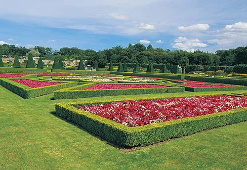 
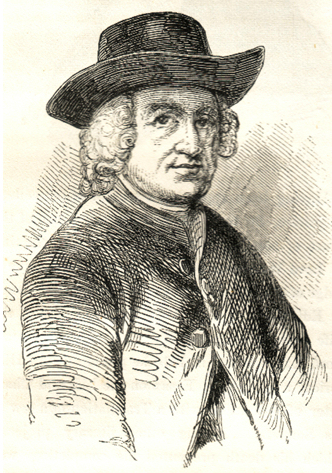 The surname of a family distinguished
in law and in the
literature of Scotland, one branch of which
possesses
the estate of Balnain, Inverness-shire, and another that of Woodhouselee,
MidLothian, -- the “haunted Woodhouselee” of Sir Walter Scott’s ballad of ‘The
Gray Brother.’ The surname of a family distinguished
in law and in the
literature of Scotland, one branch of which
possesses
the estate of Balnain, Inverness-shire, and another that of Woodhouselee,
MidLothian, -- the “haunted Woodhouselee” of Sir Walter Scott’s ballad of ‘The
Gray Brother.’
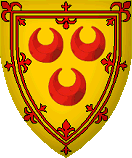 The family name originally was Seton, that of Tytler having been assumed
by the ancestor of the family, a cadet of the noble
house of Seton, founded by a
son of Lord Seton, who temp.
James IV., in a sudden quarrel at a hunting match slew a gentleman of the
name of Gray, fled to the
northern parts of Scotland before fleeing further to
France and changing his name to Tytler.
He later emerged bearing the name and though recognized as a Seton after the
troubles had ended, retained the name of Tytler and thus flourished this family. His two sons returned to
Scotland in the train of
Queen Mary in 1561, and from the elder, the families of Balnain and
Woodhouselee descend. The family name originally was Seton, that of Tytler having been assumed
by the ancestor of the family, a cadet of the noble
house of Seton, founded by a
son of Lord Seton, who temp.
James IV., in a sudden quarrel at a hunting match slew a gentleman of the
name of Gray, fled to the
northern parts of Scotland before fleeing further to
France and changing his name to Tytler.
He later emerged bearing the name and though recognized as a Seton after the
troubles had ended, retained the name of Tytler and thus flourished this family. His two sons returned to
Scotland in the train of
Queen Mary in 1561, and from the elder, the families of Balnain and
Woodhouselee descend.
The ancestor of the
Fraser-Tytlers of Belnain are written more
clearly that they are cadet of the family of
Seton, who, having slain a gentleman of the name
of Gray, in a quarrel at a hunting-match during
the reign of James IV, fled to France and
assumed the surname of Tytler, which his
posterity retained. The armorial bearings of the
family are considered to bear reference to these
circumstances—the first and fourth quarters of
the escutcheon being gules, between three
crescents, or (the ensigns of the Setons), a
lion's head, erased, argent, within a bordure of
the second. Crest—the rays of the sun issuing
from behind a cloud, with the motto, " Occultus
nou extinctus."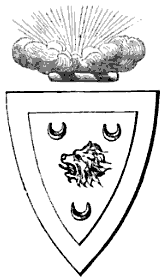
In his review of Burgon's Memoir of Patrick
Fraser Tytler, Mr. Haunay questions the origin
of the historian's family as stated in the text.
The biographer, he says, "assumes the truth of
the tradition, that the Tytlers descend from a
brother of the George, third Lord Seton, who
fell at Flodden. But it happens that we have
particular information about the Setons of that
period in the quaint old book, The IIUtory of
the House of Seytoun, by Sir Richard Maitland of
Lcthington, whose mother was one of the family,
and who wrote in the sixteenth century. He is
very particular in telling whatever is curious
about the House . . . and must have known so
singular a circumstance as the one recorded by
way of accounting for the change of name from
Seton to Tytler, and if he had known it would
have stated it, which ne nowhere does. We feel
sure, therefore, that, whatever was the origin
of the tradition in question, it is not true in
the form in which theTytlers accept it."—Essays
from the Quarterly, p. 369.
The author is informed by his friend, the
present representative of the family of
Woodhouselee, that it appears, from a very
distinct and circumstantial memorandum, dated
1738, in the handwriting of his great - great -
grandfather (Alexander Tytler), that his family
claim descent, not from " George, third Lord
Seton," as inferred by Mr. Haunay, but from his
chaplain, who was a paternal relative. It
further appears, that the chaplain was the
person referred to in the text who slew Gray in
the hunting-match, and fled to France, whence
two of his sons came to Scotland with Queen
Margin 1561, from one of whom (who settled in
the neighbourhood of Kincardine) the family of
Woodhouselee are lineally descended.
The designed landscape surrounding the mansion house at
Woodhouselee (NT26SW 4.00) was never very large and its full
extent is probably depicted on the 1st edition of the OS 6-inch
map (Edinburghshire 1854, sheet 12). The house stood on the S
side of an un-named stream, its wooded banks forming the N side
of the policies, and the lower, wooded slopes of Woodhouselee
Hill the W side. To the E and S the policies were defined by
shelter-belts enclosing improved fields and parkland.
Most of the elements of the designed landscape still survive,
though the deciduous woodland on the N has largely been replaced
by conifers. Of the features depicted within the policies on the
1st edition of the map, nothing is now visible of a summer-house
(CDTA05 237), which stood in the SW corner of the polices, and
its site is now obscured by a heavy cover of rhododendron. Two
pedestals (CDTA05 2, 238) are shown close to the NW corner of
the policies, but only one (CDTA05 2) survives, standing in
woodland, its E face inscribed with ancient Greek text and the W
with Latin. Nothing is now visible of the footbridge (CDTA05
239) that crossed the stream about 20m N of this pedestal.
None of these features are subsequently shown on the 2nd edition
of the map (Edinburgh 1895, sheet VII.SE). The Fraser Tytler
Memorial (NT26SW 39), which stands in the SW corner of the
policies, was erected in 1893, the year after the survey for the
2nd edition map. The only other structure now visible within the
former policies is some form of wooden building, the collapsed
remains of which lie in the corner of a paddock about 100m E of
the memorial.
WILLIAM TYTLER, historian and antiquarian, the son of Alexander Tytler, a
writer in Edinburgh, was born there October 12, 1711. He received his education
at the
High School and at
the university of his native city, and in 1744 was admitted into the
society of writers to the signet, which profession he exercised till his death.
His portrait, from a painting by Raeburn, engraved by Beugo (In Scots Magazine,
vol. lxiii.), is subjoined:
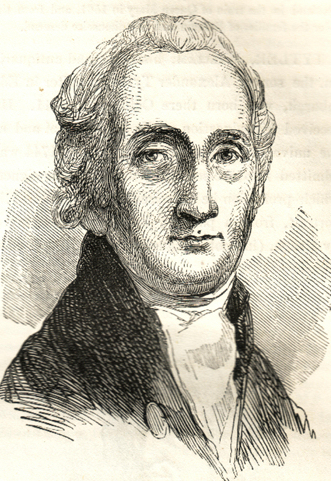 ALEXANDER FRASER
TYTLER, Lord Woodhouselee, was born in
Edinburgh, on the 15th of
October, 1747.
He was the eldest son of William Tytler, esquire of Woodhouselee, by his wife,
Anne Craig. The earlier rudiments of education he received from his father at
home; but in the eighth year of his age, he was sent to the High School, then
under the direction of Mr Mathison. At this seminary, young Tytler remained for
five years, distinguishing himself at once by the lively frankness of his
manners, and by the industry and ability with which he applied himself to, and
pursued his studies. The latter procured him the highest honours of the academy;
and, finally, in the last year of his course, obtained for him the dignity of
dux of the rector’s class. ALEXANDER FRASER
TYTLER, Lord Woodhouselee, was born in
Edinburgh, on the 15th of
October, 1747.
He was the eldest son of William Tytler, esquire of Woodhouselee, by his wife,
Anne Craig. The earlier rudiments of education he received from his father at
home; but in the eighth year of his age, he was sent to the High School, then
under the direction of Mr Mathison. At this seminary, young Tytler remained for
five years, distinguishing himself at once by the lively frankness of his
manners, and by the industry and ability with which he applied himself to, and
pursued his studies. The latter procured him the highest honours of the academy;
and, finally, in the last year of his course, obtained for him the dignity of
dux of the rector’s class.
On the
completion of his curriculum at the High School his father sent him to an
academy at Kensington, for the still further improvement of his classical
attainments. This academy was then under the care of Mr Elphinston, a man of
great learning and singular worth, who speedily formed a strong attachment to
his pupil, arising from the pleasing urbanity of his manners, and the zeal and
devotion with which he applied himself to the acquisition of classical learning.
When Mr Tytler set out for Kensington, which was in 1763, in the sixteenth year
of his age, he went with the determination of returning an accomplished scholar;
and steadily acting up to this determination, he attained the end to which it
was directed. At Kensington, he soon distinguished himself by his application
and proficiency, particularly in Latin poetry, to which he now became greatly
attached, and in which he arrived at great excellence. His master was especially
delighted with his efforts in this way, and took every opportunity, not only of
praising them himself, but of exhibiting them to all with whom he came in
contact who were capable of appreciating their merits. To his other pursuits,
while at Kensington, Mr Tytler added drawing, which soon became a favourite
amusement with him, and continued so throughout the whole of his after life. He
also began, by himself, to study Italian, and by earnest and increasing
assiduity, quickly acquired a sufficiently competent knowledge of that language,
to enable him to read it fluently, and to enjoy the beauties of the authors who
wrote in it. The diversity of Mr Tytler’s pursuits extended yet further. He
acquired, while at Kensington, a taste for natural history, in the study of
which he was greatly assisted by Dr Russel, an intimate friend of his father,
who then lived in his neighbourhood.
In 1765, Mr
Tytler returned to Edinburgh, after an absence of two years, which he always
reckoned amongst the happiest and best spent of his life. On his return to his
native city, his studies naturally assumed a more direct relation to the
profession for which he was destined,—the law. With this object chiefly in view,
he entered the university, where he began the study of civil law, under Dr Dick;
and afterwards that of municipal law, under Mr Wallace. He also studied logic,
under Dr Stevenson; rhetoric and belles lettres, under Dr Blair; and moral
science, under Dr Fergusson. Mr Tytler, however, did not, by any means, devote
his attention exclusively to these preparatory professional studies. He reserved
a portion for those that belong to general knowledge. From these he selected
natural philosophy and chemistry, and attended a course of each.
It will be
seen, from the learned and eminent names enumerated above, that Mr Tytler was
singularly fortunate in his teachers; and it will be seen, from those that
follow, that he was no less fortunate, at this period of his life, in his
acquaintance. Amongst these he had the happiness to reckon Henry Mackenzie, lord
Abercromby, lord Craig, Mr Playfair, Dr Gregory, and Dugald Stewart. During the
summer recesses of the university, Mr Tytler was in the habit of retiring to his
father’s residence at Woodhouselee. The time spent here, however, was not spent
in idleness. In the quiet seclusion of this delightful country residence, he
resumed, and followed out with exemplary assiduity, the literary pursuits to
which he was so devoted. He read extensively in the Roman classics, and in
French and Italian literature. He studied deeply, besides, the ancient writers
of England; and thus laid in a stock of knowledge, and acquired a delicacy of
taste, which few have ever attained. Nor in this devotion to severer study, did
he neglect those lighter accomplishments, which so elegantly relieve the
exhaustion and fatigues of mental application. He indulged his taste for drawing
and music, and always joined in the little family concerts, in which his amiable
and accomplished father took singular delight.
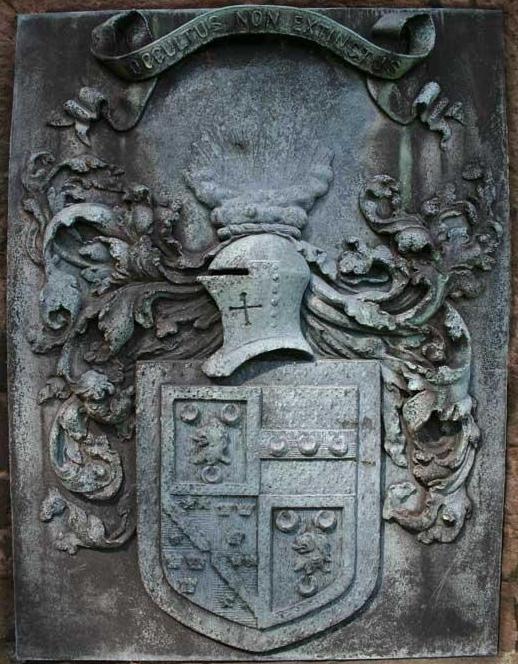 In 1770, Mr
Tytler was called to the bar; and in the spring of the succeeding year, he paid
a visit to Paris,
in company with Mr Kerr of Blackshiels. Shortly after this, lord Kames, with
whom he had the good fortune to become acquainted in the year 1767, and who had
perceived and appreciated his talents, having seen from time to time some of his
little literary efforts, recommended to him to write something in the way of his
profession. This recommendation, which had for its object at once the promotion
of his interests, and the acquisition of literary fame, his lordship followed
up, by proposing that Mr Tytler should write a supplementary volume to his
Dictionary of Decisions. Inspired with confidence, and flattered by the opinion
of his abilities and competency for the work, which this suggestion implied on
the part of lord Kames, Mr Tytler immediately commenced the laborious
undertaking, and in five years of almost unremitting toil, completed it. The
work, which was executed in such a manner as to call forth not only the
unqualified approbation of the eminent person who had first proposed it, but of
all who were competent to judge of its merits, was published in folio, in 1778.
Two years after this, in 1780, Mr Tytler was appointed conjunct professor of
universal history in the college
of Edinburgh with Mr Pringle; and in 1786, he became sole professor. From this
period, till the year 1800, he devoted himself exclusively to the duties of his
office; but in these his services were singularly efficient, surpassing far in
importance, and in the benefits which they conferred on the student, what any of
his predecessors had ever performed. His course of lectures was so remarkably
comprehensive, that, although they were chiefly intended, in accordance with the
object for which the class was instituted, for the benefit of those who were
intended for the law, he yet numbered amongst his students many who were not
destined for that profession. The favourable impression made by these
performances, and the popularity which they acquired for Mr Tytler, induced him,
in 1782, to publish, what he modestly entitled "Outlines" of his course of
lectures. These were so well received, that their ingenious author felt himself
called upon some time afterwards to republish them in a more extended form. This
he accordingly did, in two volumes, under the title of "Elements of General
History." The Elements were received with an increase of public favour,
proportioned to the additional value which had been imparted to the work by its
extension. It became a text book in some of the universities of Britain; and was
held in equal estimation, and similarly employed, in the universities of
America. The work has since passed through many editions. The reputation of a
man of letters, and of extensive and varied acquirements, which Mr Tytler now
deservedly enjoyed, subjected him to numerous demands for literary assistance
and advice. Amongst these, was a request from Dr Gregory, then (1788) engaged in
publishing the works of his father, Dr John Gregory, to prefix to these works an
account of the life and writings of the latter. With this request, Mr Tytler
readily complied; and he eventually discharged the trust thus confided to him,
with great fidelity and discrimination, and with the tenderest and most
affectionate regard for the memory which he was perpetuating. In 1770, Mr
Tytler was called to the bar; and in the spring of the succeeding year, he paid
a visit to Paris,
in company with Mr Kerr of Blackshiels. Shortly after this, lord Kames, with
whom he had the good fortune to become acquainted in the year 1767, and who had
perceived and appreciated his talents, having seen from time to time some of his
little literary efforts, recommended to him to write something in the way of his
profession. This recommendation, which had for its object at once the promotion
of his interests, and the acquisition of literary fame, his lordship followed
up, by proposing that Mr Tytler should write a supplementary volume to his
Dictionary of Decisions. Inspired with confidence, and flattered by the opinion
of his abilities and competency for the work, which this suggestion implied on
the part of lord Kames, Mr Tytler immediately commenced the laborious
undertaking, and in five years of almost unremitting toil, completed it. The
work, which was executed in such a manner as to call forth not only the
unqualified approbation of the eminent person who had first proposed it, but of
all who were competent to judge of its merits, was published in folio, in 1778.
Two years after this, in 1780, Mr Tytler was appointed conjunct professor of
universal history in the college
of Edinburgh with Mr Pringle; and in 1786, he became sole professor. From this
period, till the year 1800, he devoted himself exclusively to the duties of his
office; but in these his services were singularly efficient, surpassing far in
importance, and in the benefits which they conferred on the student, what any of
his predecessors had ever performed. His course of lectures was so remarkably
comprehensive, that, although they were chiefly intended, in accordance with the
object for which the class was instituted, for the benefit of those who were
intended for the law, he yet numbered amongst his students many who were not
destined for that profession. The favourable impression made by these
performances, and the popularity which they acquired for Mr Tytler, induced him,
in 1782, to publish, what he modestly entitled "Outlines" of his course of
lectures. These were so well received, that their ingenious author felt himself
called upon some time afterwards to republish them in a more extended form. This
he accordingly did, in two volumes, under the title of "Elements of General
History." The Elements were received with an increase of public favour,
proportioned to the additional value which had been imparted to the work by its
extension. It became a text book in some of the universities of Britain; and was
held in equal estimation, and similarly employed, in the universities of
America. The work has since passed through many editions. The reputation of a
man of letters, and of extensive and varied acquirements, which Mr Tytler now
deservedly enjoyed, subjected him to numerous demands for literary assistance
and advice. Amongst these, was a request from Dr Gregory, then (1788) engaged in
publishing the works of his father, Dr John Gregory, to prefix to these works an
account of the life and writings of the latter. With this request, Mr Tytler
readily complied; and he eventually discharged the trust thus confided to him,
with great fidelity and discrimination, and with the tenderest and most
affectionate regard for the memory which he was perpetuating.
Mr Tytler wrote
pretty largely, also, for the well known periodicals, the Mirror and the
Lounger. To the former of these he contributed, Nos. 17, 37, 59, and 79 ; and to
the latter, Nos. 7, 9, 24, 44, 67, 70, and 79. The first of these were written
with the avowed intention of giving a higher and sprightlier character to the
work to which they were furnished; qualities in which he thought it deficient,
although he greatly admired the talent and genius displayed in its graver
papers; but he justly conceived, that a judicious admixture of a little humour,
occasionally, would not be against its popularity. The circumstances in which
his contributions to the Lounger were composed, afford a very remarkable
instance of activity of mind and habits, of facility of expression, and felicity
of imagination. They were almost all written at inns, where he happened to be
detained for any length of time, in his occasional journeys from one place to
another. Few men would have thought of devoting such hours to any useful
purpose; but the papers of the Lounger, above enumerated, show how much may be
made of them by genius and diligence.
On the
institution of the Royal Society of Edinburgh in 1783, Mr Tytler became one of
its constituent members; and was soon afterwards unanimously elected one of the
secretaries of the literary class, in which capacity he drew up an account of
the Origin and History of the Society, which was prefixed to the first volume of
its Transactions. In 1788, Mr Tytler contributed to the Transactions, a
biographical sketch of Robert Dundas of Arniston, lord president of the Court of
Session; and in the year following, read a paper to the society on the vitrified
forts in the Highlands of Scotland. The principal scope of this paper, which
discovers great antiquarian knowledge and research, is to show, that, in all
probability, this remarkable characteristic of the ancient Highland forts—their
vitrification—was imparted to them, not during their erection, as was generally
supposed, but at their destruction, which its author reasonably presumes, would
be, in most, if not all cases, effected by fire. With the exception of some
trifling differences of opinion in one or two points of minor importance, Mr
Tytler’s essay met with the warm and unanimous approbation of the most eminent
antiquarians of the day.
The next
publication of this versatile and ingenious writer, was, an "Essay on the
Principles of Translation," published, anonymously, in 1790. By one of those
singular coincidences, which are not of unfrequent occurrence in the literary
world, it happened that Dr Campbell, principal of the Marischal college, Aberdeen,
had, but a short while before, published a work, entitled "Translations of the
Gospel; to which was prefixed a Preliminary Dissertation on the Principles of
Taste." Between many of the sentiments expressed in this dissertation, and those
promulgated in Mr Tytler’s essay, there was a resemblance so strong and close,
that Dr Campbell, on perusing the latter, immediately conceived that the
anonymous author had pillaged his dissertation; and instantly wrote to Mr Creech
of Edinburgh, his publisher, intimating his suspicions. Mr Tytler, however, now
came forward, acknowledged himself to be the author of the suspected essay, and,
in a correspondence which he opened with Dr Campbell, not only convinced him
that the similarity of sentiment which appeared in their respective
publications, was the result of mere accident, but succeeded in obtaining the
esteem and warmest friendship of his learned correspondent.
Mr Tytler’s
essay attained a rapid and extraordinary celebrity. Complimentary letters flowed
in upon its author from many of the most eminent men in England; and the book
itself speedily came to be considered a standard work in English criticism. Mr
Tytler had now attained nearly the highest pinnacle of literary repute. His name
was widely known, and was in every case associated with esteem for his worth,
and admiration of his talents. It is no matter for wonder then, that such a man
should have attracted the notice of those in power, nor that they should have
thought it would reflect credit on themselves, to promote his interests.
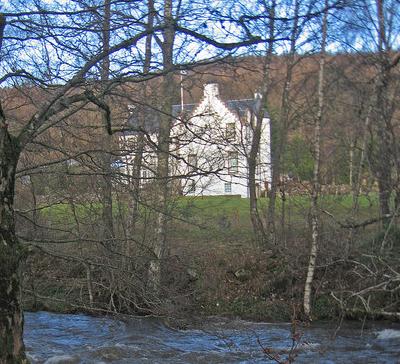 In 1790, Mr
Tytler, through the influence of lord Melville, was appointed to the high
dignity of judge-advocate of Scotland. The duties of this important office had
always been, previously to Mr Tytler’s nomination, discharged by deputy; but
neither the activity of his body and mind, nor the strong sense of the duty he
owed to the public, would permit him to have recourse to such a subterfuge. He
resolved to discharge the duties now imposed upon him in person, and continued
to do so, attending himself on every trial, so long as he held the appointment.
He also drew up, while acting as judge-advocate, a treatise on Martial Law,
which has been found of great utility. Of the zeal with which Mr Tytler
discharged the duties of his office, and of the anxiety and impartiality with
which he watched over and directed the course of justice, a remarkable instance
is afforded in the case of a court-martial, which was held at Ayr.
Mr Tytler thought the sentence of that court unjust; and under this impression,
which was well founded, immediately represented the matter to Sir Charles
Morgan, judge-advocate general of England, and
prayed for a reversion of the sentence. Sir Charles cordially concurred in
opinion with Mr Tytler regarding the decision of the court-martial, and
immediately procured the desired reversion. In the fulness of his feelings, the
feelings of a generous and upright mind, Mr Tytler recorded his satisfaction
with the event, on the back of the letter which announced it. In 1790, Mr
Tytler, through the influence of lord Melville, was appointed to the high
dignity of judge-advocate of Scotland. The duties of this important office had
always been, previously to Mr Tytler’s nomination, discharged by deputy; but
neither the activity of his body and mind, nor the strong sense of the duty he
owed to the public, would permit him to have recourse to such a subterfuge. He
resolved to discharge the duties now imposed upon him in person, and continued
to do so, attending himself on every trial, so long as he held the appointment.
He also drew up, while acting as judge-advocate, a treatise on Martial Law,
which has been found of great utility. Of the zeal with which Mr Tytler
discharged the duties of his office, and of the anxiety and impartiality with
which he watched over and directed the course of justice, a remarkable instance
is afforded in the case of a court-martial, which was held at Ayr.
Mr Tytler thought the sentence of that court unjust; and under this impression,
which was well founded, immediately represented the matter to Sir Charles
Morgan, judge-advocate general of England, and
prayed for a reversion of the sentence. Sir Charles cordially concurred in
opinion with Mr Tytler regarding the decision of the court-martial, and
immediately procured the desired reversion. In the fulness of his feelings, the
feelings of a generous and upright mind, Mr Tytler recorded his satisfaction
with the event, on the back of the letter which announced it.
In the year
1792, Mr Tytler lost his father, and by his death succeeded to the estate of
Woodhouselee, and shortly after Mrs Tytler succeeded in a similar manner to the
estate of Balmain in Inverness-shire. On taking possession of Woodhouselee, Mr
Tytler designed, and erected a little monument to the memory of his father, on
which was an appropriate Latin inscription, in a part of the grounds which his
parents had delighted to frequent.
This tribute of
filial affection paid, Mr Tytler, now in possession of affluence, and every
other blessing on which human felicity depends, began to realize certain
projects for the improvement and embellishment of his estate, which he had long
fondly entertained, and thinking with Pope that "to enjoy, is to obey," he
prepared to make the proper use of the wealth which had been apportioned to him.
This was in opening up sources of rational and innocent enjoyment for himself,
and in promoting the happiness and comfort of those around him. From this period
he resided constantly at Woodhouselee, the mansion-house of which he enlarged in
order that he might enlarge the bounds of his hospitality. The felicity,
however, which he now enjoyed, and for which, perhaps, no man was ever more
sincerely or piously grateful, was destined soon to meet with a serious
interruption. In three years after his accession to his paternal estate, viz, in
1795, Mr Tytler was seized with a dangerous and long protracted fever,
accompanied by delirium. The skill and assiduity of his friend Dr Gregory,
averted any fatal consequences from the fever, but during the paroxysms of the
disease he had burst a blood vessel, an accident which rendered his entire
recovery at first doubtful, and afterwards exceedingly tardy. During the hours
of convalescence which succeeded his illness on this occasion, Mr Tytler
employed himself in improving, and adapting to the advanced state of knowledge,
Derham’s Physico-Theology, a work which he had always held in high estimation.
To this new edition of Derham’s work, which he published in 1799, he prefixed a
"Dissertation on Final Causes." In the same year Mr Tytler wrote a pamphlet
entitled, "Ireland profiting by Example, or the Question considered, Whether
Scotland has gained or lost by the Union." He was induced to this undertaking by
the circumstance of the question having been then furiously agitated, whether
any benefit had arisen, or was likely to arise from the Union with Ireland. Of
Mr Tytler’s pamphlet the interest was so great that no less than 3000 copies
were sold on the day of publication.
The well earned
reputation of Mr Tytler still kept him in the public eye, and in the way of
preferment. In 1801, a vacancy having occurred in the bench of the court of
Session by the death of lord Stonefield, the subject of this memoir was
appointed, through the influence of lord Melville, to succeed him, and took his
seat, on the 2nd of
February, 1802,
as lord Woodhouselee. His lordship now devoted himself to the duties of his
office with the same zeal and assiduity which had distinguished his proceedings
as judge-advocate. While the courts were sitting, he resided in town, and
appropriated every hour to the business allotted to him; but during the summer
recess, he retired to his country-seat, and there devoted himself with similar
assiduity to literary pursuits. At this period his lordship contemplated several
literary works; the gratitude, and a warm and affectionate regard for the memory
of his early patron induced him to abandon them all, in order to write the Life
of Lord Kames. This work, which occupied him, interveniently, for four years,
was published in 2 volumes, quarto, in 1807, with the title of "Memoirs of the
Life and Writings of Henry Home, lord Kames." Besides a luminous account of its
proper subject, and of all his writings, it contains a vast fund of literary
anecdote, many notices of eminent persons, of whom there was hardly any other
commemoration.
On the
elevation of lord justice clerk Hope to the president’s chair in 1811, lord
Woodhouselee was appointed to the Justiciary bench, and with this appointment
terminated his professional advancement. His lordship still continued to devote
his leisure hours to literary pursuits, but these were now exclusively confined
to the revision of his Lectures upon History. In this task, however, he laboured
with unwearied assiduity, adding to them the fresh matter with which subsequent
study and experience had supplied him, and improving them where an increased
refinement in taste showed him they were defective.
In 1812, lord
Woodhouselee succeeded to some property bequeathed him by his friend and
relation, Sir James Craig, Governor of Canada. On this occasion a journey to
London was necessary, and his lordship accordingly proceeded thither. Amongst
the other duties which devolved upon him there, as nearest relative of the
deceased knight, was that of returning to the sovereign the insignia of the
order of the Bath with which Sir James had been invested. In the discharge of
this duty his lordship had an interview with the Prince Regent, who received him
with marked cordiality, and, from the conversation which afterwards followed,
became so favourably impressed regarding him, that he caused an intimation to be
conveyed to him soon after, that the dignity of baronet would be conferred upon
him if he chose it. This honour, however, his lordship modestly declined.
On his return
from London, his lordship, who was now in the sixty-fifth year of his age, was
attacked with his old complaint, and so seriously, that he was advised, and
prevailed upon to remove from Woodhouselee to Edinburgh for the benefit of the
medical skill which the city afforded. No human aid, however, could now avail
him. His complaint daily gained ground in despite of every effort to arrest its
progress. Feeling that he had not long to live, although perhaps, not aware that
the period was to be so brief, he desired his coachman to drive him out on the
road in the direction of Woodhouselee, the scene of the greater portion of the
happiness which he had enjoyed through life, that he might obtain a last sight
of his beloved retreat.
On coming
within view of the well-known grounds his eyes beamed with a momentary feeling
of delight. He returned home, ascended the stairs which led to his study with
unwonted vigour, gained the apartment, sank on the floor, and expired without a
groan. Lord
Woodhouselee died on the 5th January, 1813, in the 66th year of his age; leaving
a name which will not soon be forgotten, and a reputation for taste, talent, and
personal worth, which will not often be surpassed.
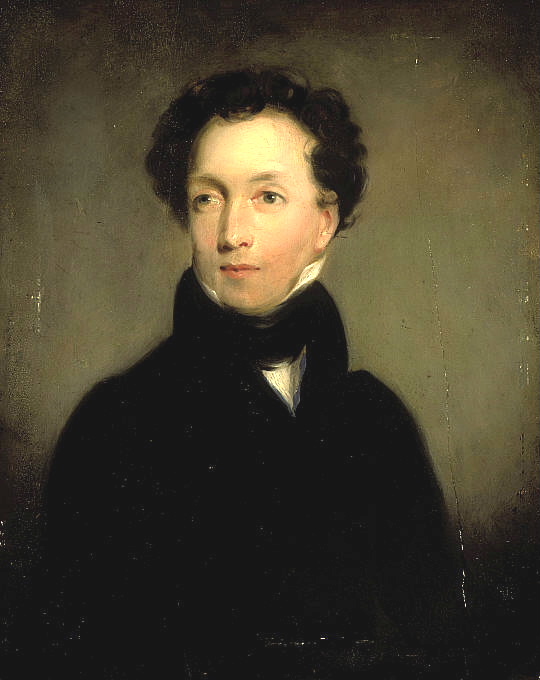 Patrick
Fraser Tytler Patrick
Fraser Tytler, the son of
Lord Woodhouselee, he was born in
Edinburgh, where he attended the
Royal High School. He was called to the bar
in 1813; in 1816 he became
King's counsel in the Exchequer, and
practised as an advocate until 1832. He moved to
London, and it was largely owing to his efforts
that a scheme for publishing state papers was
carried out. Tytler was one of the founders of
the
Bannatyne Club and of the
English Historical Society. He died at
Great Malvern on 14 December 1849. His life
(1859) was written by his friend
John William Burgon. Tytler married
Anastasia Jessey, daughter of Thomson Bonar,
Esq., (1780–1828) of Campden, Kent, by his
spouse Anastasia Jessey, daughter of Matthew
Guthrie of Halkerton, M.D.
Tytler is most noted for his
literary output. He contributed
to Allison's Travels in
France (1815); his first
independent essays were papers
in
Blackwood's Magazine.
His great work, the History
of Scotland (1828–1843)
covered the period between 1249
and 1603.
His other works include:
- contributions to
Thomson's Select Melodies
of Scotland (1824)
- Life of James
Crichton of Cluny, commonly
called the Admirable
Crichton (1819; 2nd ed.,
1823)
- a Memoir of Sir
Thomas Craig of Riccarton
(1823)
- an Essay on the
Revival of Greek Literature
in Italy, and a Life of John
Wickliff, published
anonymously (1826)
- Lives of Scottish
Worthies, for Murray's
Family Library (1831–1833)
- Historical View of
the Progress of Discovery in
America (1832)
- Life of Sir Walter
Raleigh (1833)
- Life of Henry VIII.
(1837)
- England under the
Reigns of Edward VI. and
Mary, from original
letters (1839)
- Notes on the Darnley
Jewel (1843)
- Portraits of Mary
Queen of Scots (1845).
Robert
Christopher Tytler
(1818-1872) was born in India, the son of a surgeon in the Bengal Army who had
married the daughter of a German count. Tytler joined the Bengal Army and gained
a medal for his conduct in Afghanistan in 1842. He was deeply involved in
fighting the Indian Mutiny, taking an important role in the Siege of Delhi. He
was the officer in charge of the Royal Palace at the Red Fort after it was
captured in September 1857, and although not taking part in the widespread
unofficial looting by the British, was able to pick up some incredible bargains
when the official 'Prizes of War' were auctioned.
His second wife,
Harriet Tytler,
(1827-1907), was the redoubtable daughter of another military family who later
founded the Asiatic Christian Orphanage at Simla. They were married in Lucknow
in 1848, She was the only Englishwoman present at the siege, because she could
not join the others in their retreat on elephant because of the advanced stage
of her pregnancy. Their seventh child (one of the previous six had died very
young) was born during the siege on 21 June 1857; they named him Stanley
Delhi-Force Tytler. Her remarkable memoirs of the period 1828-58 were first
published in 'Chambers Journal' in 1931, coming out later as a book from Oxford
University press (edited by Anthony Sattin) in 1986, under the title 'An
Englishwoman in India'.
After the war,
Robert Tytler was promoted to Major, and given six months leave in 1858. The
couple learnt photography from Felice Beato and John Murray before travelling
around the country taking over 500 large calotypes of scenes connected with the
Mutiny.
These images were shown to the
public by the
Photographic Society of Bengal
in 1859, and they were also on show (and for sale) at the Tytler's home in
Calcutta. The couple went back for an extended leave in England in 1860-61 and
showed the work there. Roughly 80 of their pictures are in the India Office
collection, listed as by Tytler, Robert and Harriet.
Harriet's contribution to the
pictures has not always been noted, and they are sometimes attributed to Robert
alone, but the opposite has also occured. The picture 'The
Kootub, Delhi',
included in 'India through the Lens: Photography 1840-1911' (see box, top
right), is attributed to Harriet Tytler alone. It is unclear what the basis is
for this assertion.
The
Qutb Minar
is an ornate
thirteenth-century sandstone minaret 238 ft high, built to symbolise the power
of the Islamic presence in India. The Tytler's picture is a fine two part
vertical panorama of two albumen prints, each 51.8x40cm (20x16") which join
almost perfectly. To describe it - as one reviewer did ' as 'cobbled together' -
is an insult to a fine piece of craftsmanship.
Robert Tytler
was later made Superintendent of the convict settlement at Port Blair in the
Andaman Islands from 1862-1864, probably in recognition for having sold the
crown of Bahadur Shah, the last Mughal Emperor, rather cheaply to Queen
Victoria. He did not last long in this post, as he made a disastrous error of
judgement investigating the alleged murder of some sailors by two Andamese
natives. Tytler took no notice of their evidence, regarding the natives as
unreliable. Eventually this resulted in him being retired from active duty and
put in charge of the museum at Simla until his death in 1872. The Tytlers do not
appear to have made any significant photographs after their 1858 pictures.
|
 |
 Patrick
Fraser Tytler, the son of
Lord Woodhouselee, he was born in
Edinburgh, where he attended the
Royal High School. He was called to the bar
in 1813; in 1816 he became
King's counsel in the Exchequer, and
practised as an advocate until 1832. He moved to
London, and it was largely owing to his efforts
that a scheme for publishing state papers was
carried out. Tytler was one of the founders of
the
Bannatyne Club and of the
English Historical Society. He died at
Great Malvern on 14 December 1849. His life
(1859) was written by his friend
John William Burgon.
Patrick
Fraser Tytler, the son of
Lord Woodhouselee, he was born in
Edinburgh, where he attended the
Royal High School. He was called to the bar
in 1813; in 1816 he became
King's counsel in the Exchequer, and
practised as an advocate until 1832. He moved to
London, and it was largely owing to his efforts
that a scheme for publishing state papers was
carried out. Tytler was one of the founders of
the
Bannatyne Club and of the
English Historical Society. He died at
Great Malvern on 14 December 1849. His life
(1859) was written by his friend
John William Burgon.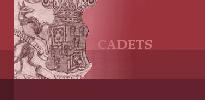



 The surname of a family distinguished
in law and in the
literature of
The surname of a family distinguished
in law and in the
literature of 


 In 1770, Mr
Tytler was called to the bar; and in the spring of the succeeding year, he paid
a visit to Paris,
in company with Mr Kerr of Blackshiels. Shortly after this, lord Kames, with
whom he had the good fortune to become acquainted in the year 1767, and who had
perceived and appreciated his talents, having seen from time to time some of his
little literary efforts, recommended to him to write something in the way of his
profession. This recommendation, which had for its object at once the promotion
of his interests, and the acquisition of literary fame, his lordship followed
up, by proposing that Mr Tytler should write a supplementary volume to his
Dictionary of Decisions. Inspired with confidence, and flattered by the opinion
of his abilities and competency for the work, which this suggestion implied on
the part of lord Kames, Mr Tytler immediately commenced the laborious
undertaking, and in five years of almost unremitting toil, completed it. The
work, which was executed in such a manner as to call forth not only the
unqualified approbation of the eminent person who had first proposed it, but of
all who were competent to judge of its merits, was published in folio, in 1778.
Two years after this, in 1780, Mr Tytler was appointed conjunct professor of
universal history in the college
of Edinburgh with Mr Pringle; and in 1786, he became sole professor. From this
period, till the year 1800, he devoted himself exclusively to the duties of his
office; but in these his services were singularly efficient, surpassing far in
importance, and in the benefits which they conferred on the student, what any of
his predecessors had ever performed. His course of lectures was so remarkably
comprehensive, that, although they were chiefly intended, in accordance with the
object for which the class was instituted, for the benefit of those who were
intended for the law, he yet numbered amongst his students many who were not
destined for that profession. The favourable impression made by these
performances, and the popularity which they acquired for Mr Tytler, induced him,
in 1782, to publish, what he modestly entitled "Outlines" of his course of
lectures. These were so well received, that their ingenious author felt himself
called upon some time afterwards to republish them in a more extended form. This
he accordingly did, in two volumes, under the title of "Elements of General
History." The Elements were received with an increase of public favour,
proportioned to the additional value which had been imparted to the work by its
extension. It became a text book in some of the universities of Britain; and was
held in equal estimation, and similarly employed, in the universities of
America. The work has since passed through many editions. The reputation of a
man of letters, and of extensive and varied acquirements, which Mr Tytler now
deservedly enjoyed, subjected him to numerous demands for literary assistance
and advice. Amongst these, was a request from Dr Gregory, then (1788) engaged in
publishing the works of his father, Dr John Gregory, to prefix to these works an
account of the life and writings of the latter. With this request, Mr Tytler
readily complied; and he eventually discharged the trust thus confided to him,
with great fidelity and discrimination, and with the tenderest and most
affectionate regard for the memory which he was perpetuating.
In 1770, Mr
Tytler was called to the bar; and in the spring of the succeeding year, he paid
a visit to Paris,
in company with Mr Kerr of Blackshiels. Shortly after this, lord Kames, with
whom he had the good fortune to become acquainted in the year 1767, and who had
perceived and appreciated his talents, having seen from time to time some of his
little literary efforts, recommended to him to write something in the way of his
profession. This recommendation, which had for its object at once the promotion
of his interests, and the acquisition of literary fame, his lordship followed
up, by proposing that Mr Tytler should write a supplementary volume to his
Dictionary of Decisions. Inspired with confidence, and flattered by the opinion
of his abilities and competency for the work, which this suggestion implied on
the part of lord Kames, Mr Tytler immediately commenced the laborious
undertaking, and in five years of almost unremitting toil, completed it. The
work, which was executed in such a manner as to call forth not only the
unqualified approbation of the eminent person who had first proposed it, but of
all who were competent to judge of its merits, was published in folio, in 1778.
Two years after this, in 1780, Mr Tytler was appointed conjunct professor of
universal history in the college
of Edinburgh with Mr Pringle; and in 1786, he became sole professor. From this
period, till the year 1800, he devoted himself exclusively to the duties of his
office; but in these his services were singularly efficient, surpassing far in
importance, and in the benefits which they conferred on the student, what any of
his predecessors had ever performed. His course of lectures was so remarkably
comprehensive, that, although they were chiefly intended, in accordance with the
object for which the class was instituted, for the benefit of those who were
intended for the law, he yet numbered amongst his students many who were not
destined for that profession. The favourable impression made by these
performances, and the popularity which they acquired for Mr Tytler, induced him,
in 1782, to publish, what he modestly entitled "Outlines" of his course of
lectures. These were so well received, that their ingenious author felt himself
called upon some time afterwards to republish them in a more extended form. This
he accordingly did, in two volumes, under the title of "Elements of General
History." The Elements were received with an increase of public favour,
proportioned to the additional value which had been imparted to the work by its
extension. It became a text book in some of the universities of Britain; and was
held in equal estimation, and similarly employed, in the universities of
America. The work has since passed through many editions. The reputation of a
man of letters, and of extensive and varied acquirements, which Mr Tytler now
deservedly enjoyed, subjected him to numerous demands for literary assistance
and advice. Amongst these, was a request from Dr Gregory, then (1788) engaged in
publishing the works of his father, Dr John Gregory, to prefix to these works an
account of the life and writings of the latter. With this request, Mr Tytler
readily complied; and he eventually discharged the trust thus confided to him,
with great fidelity and discrimination, and with the tenderest and most
affectionate regard for the memory which he was perpetuating. In 1790, Mr
Tytler, through the influence of lord Melville, was appointed to the high
dignity of judge-advocate of Scotland. The duties of this important office had
always been, previously to Mr Tytler’s nomination, discharged by deputy; but
neither the activity of his body and mind, nor the strong sense of the duty he
owed to the public, would permit him to have recourse to such a subterfuge. He
resolved to discharge the duties now imposed upon him in person, and continued
to do so, attending himself on every trial, so long as he held the appointment.
He also drew up, while acting as judge-advocate, a treatise on Martial Law,
which has been found of great utility. Of the zeal with which Mr Tytler
discharged the duties of his office, and of the anxiety and impartiality with
which he watched over and directed the course of justice, a remarkable instance
is afforded in the case of a court-martial, which was held at Ayr.
Mr Tytler thought the sentence of that court unjust; and under this impression,
which was well founded, immediately represented the matter to Sir Charles
Morgan, judge-advocate general of England, and
prayed for a reversion of the sentence. Sir Charles cordially concurred in
opinion with Mr Tytler regarding the decision of the court-martial, and
immediately procured the desired reversion. In the fulness of his feelings, the
feelings of a generous and upright mind, Mr Tytler recorded his satisfaction
with the event, on the back of the letter which announced it.
In 1790, Mr
Tytler, through the influence of lord Melville, was appointed to the high
dignity of judge-advocate of Scotland. The duties of this important office had
always been, previously to Mr Tytler’s nomination, discharged by deputy; but
neither the activity of his body and mind, nor the strong sense of the duty he
owed to the public, would permit him to have recourse to such a subterfuge. He
resolved to discharge the duties now imposed upon him in person, and continued
to do so, attending himself on every trial, so long as he held the appointment.
He also drew up, while acting as judge-advocate, a treatise on Martial Law,
which has been found of great utility. Of the zeal with which Mr Tytler
discharged the duties of his office, and of the anxiety and impartiality with
which he watched over and directed the course of justice, a remarkable instance
is afforded in the case of a court-martial, which was held at Ayr.
Mr Tytler thought the sentence of that court unjust; and under this impression,
which was well founded, immediately represented the matter to Sir Charles
Morgan, judge-advocate general of England, and
prayed for a reversion of the sentence. Sir Charles cordially concurred in
opinion with Mr Tytler regarding the decision of the court-martial, and
immediately procured the desired reversion. In the fulness of his feelings, the
feelings of a generous and upright mind, Mr Tytler recorded his satisfaction
with the event, on the back of the letter which announced it.